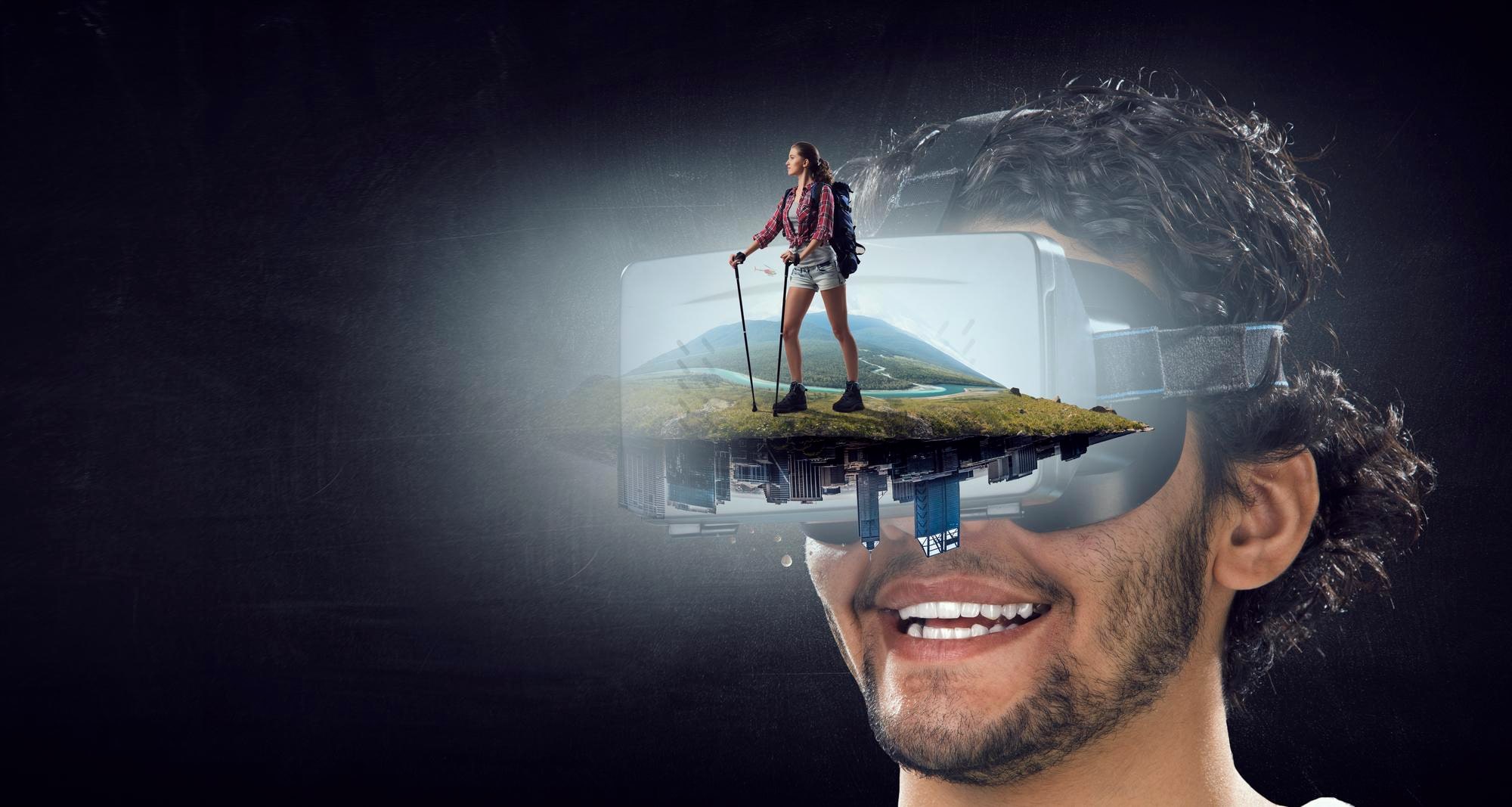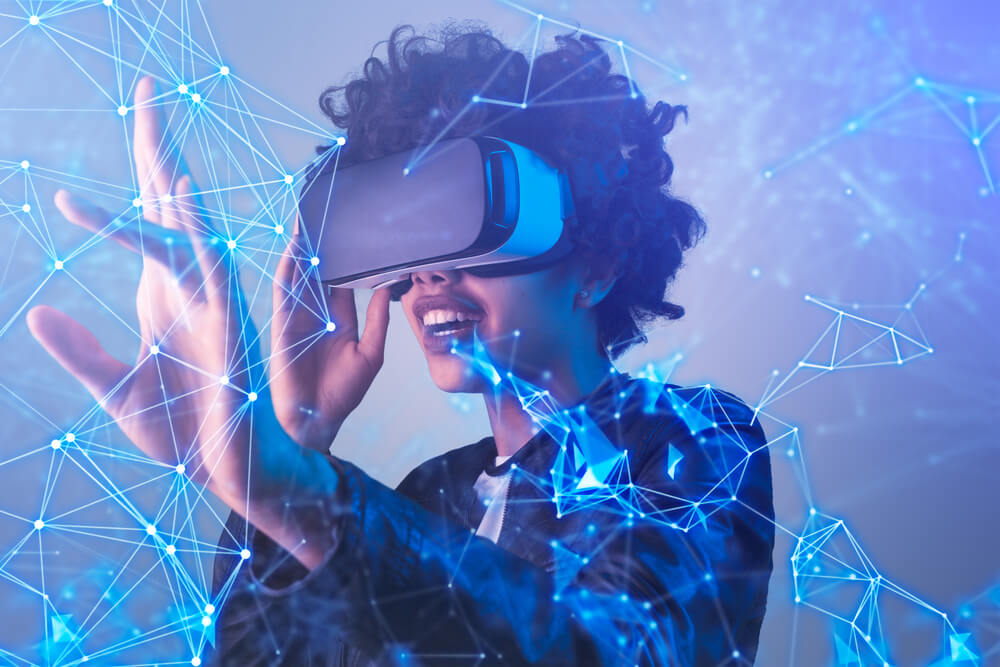Technology
Exploring Virtual Reality: Immersive Experiences and Applications

Virtual Reality (VR) is no longer the stuff of science fiction. It’s rapidly evolving from a niche technology to a powerful tool with the potential to revolutionize various aspects of our lives. This comprehensive exploration delves into the world of VR, examining its capabilities, the immersive experiences it offers, and its diverse applications across various industries.
1. Demystifying VR: Stepping into a Simulated World
Imagine wearing a headset that transports you to a breathtaking mountain peak, a bustling underwater coral reef, or even the surface of Mars. VR technology creates a simulated reality that users can explore and interact with in a seemingly real way. VR headsets utilize sophisticated displays and tracking sensors to immerse users in a computer-generated environment. By simulating sight, sound, and even touch, VR creates a truly immersive experience that transcends the limitations of the physical world.
Real-Life Example: The Oculus Quest 2 is a popular VR headset that offers a wide range of experiences, from exploring virtual worlds to playing immersive games. Users can visit historical landmarks, climb Mount Everest virtually, or even face their fears in a controlled VR environment.
2. Beyond Entertainment: Unveiling the Diverse Applications of VR
While VR offers unparalleled entertainment experiences, its potential extends far beyond gaming:
- Education and Training: VR can revolutionize education by creating immersive learning experiences. Imagine students exploring the pyramids of Egypt or dissecting a virtual frog in a biology class. VR can enhance engagement, improve knowledge retention, and make learning more interactive and exciting.
- Real-Life Example: 🩺 Medical schools are increasingly utilizing VR for surgical training. VR simulations allow aspiring surgeons to practice complex procedures in a safe and controlled environment, improving their skills and reducing risks associated with traditional training methods.
- Architecture and Design: VR allows architects and designers to create virtual models of buildings and spaces before construction begins. This enables them to explore designs in 3D, identify potential problems, and make adjustments before breaking ground.
- Real-Life Example: IKEA Place, a VR app, allows users to virtually place furniture in their homes before making a purchase. This helps them visualize how furniture will look and fit in their space, reducing the risk of buying something that doesn’t fit or suit their style.
- Travel and Tourism: VR can virtually transport you to breathtaking destinations around the world. Imagine exploring the Great Barrier Reef or taking a virtual tour of the Louvre Museum from the comfort of your living room. VR can provide a taste of a destination before planning an actual trip or offer an immersive experience for those unable to travel physically.
- Real-Life Example: Marriott Hotels launched a VR experience that allows potential guests to virtually tour their hotel properties. This allows users to explore different room types, amenities, and locations before booking a stay.
- Therapy and Rehabilitation: VR can be used for exposure therapy to help people overcome phobias like heights or public speaking. It can also play a role in physical rehabilitation, allowing patients to practice movements in a safe and controlled virtual environment.
- Real-Life Example: Physical therapists are using VR to help stroke patients regain mobility by allowing them to practice exercises in a virtual world that motivates and engages them.
3. The Building Blocks of VR: Essential Components and Technologies
To create an immersive VR experience, several key components work together:
- VR Headsets: These headsets contain displays that project separate images for each eye, creating a sense of depth and stereoscopic vision. Modern VR headsets also integrate motion sensors that track the user’s head movements, allowing them to look around in the virtual world naturally.
- Controllers and Haptic Feedback: VR controllers allow users to interact with objects and navigate the virtual environment. Haptic feedback technology adds another layer of immersion by simulating the sense of touch. Imagine feeling the texture of a virtual object or the recoil of a virtual weapon.
- Software and Content Creation: Developing captivating VR experiences requires specialized software tools and creative content developers. Creating realistic 3D environments and interactive elements is crucial for a truly immersive VR experience.
4. The Evolving Landscape: Future Trends and Advancements in VR
The future of VR is brimming with exciting possibilities:
- Wireless and Standalone VR: VR headsets are becoming increasingly wireless, offering greater freedom of movement and reducing dependence on tethered setups.
- Augmented Reality (AR) Integration: The convergence of VR and AR (Augmented Reality) could create a mixed reality (MR) experience that seamlessly blends the virtual and real worlds. Imagine virtual objects overlaid on the real world, enhancing user experiences in various applications.
- Advancements in Haptic Technology: More sophisticated haptic feedback systems will create a more realistic sense of touch in VR environments. Imagine feeling the difference between virtual grass and gravel or the weight of a virtual object in your hand.
- Brain-Computer Interfaces (BCIs): The potential integration of BCIs with VR could revolutionize user interaction. Imagine controlling virtual objects with your thoughts or experiencing emotions within the virtual world in a more natural way.
- Social VR and Shared Experiences: The development of social VR platforms will allow users to interact with each other in virtual spaces. Imagine attending virtual concerts, collaborating on projects, or even socializing with friends in a virtual world.
Real-Life Example: VR Chat is a popular social VR platform where users can create avatars, explore virtual worlds, and interact with others online. This platform offers a glimpse into the future of social interaction in virtual spaces.

5. Considerations and Challenges: Safety, Privacy, and Accessibility
While VR offers immense potential, some considerations require attention:
- Safety: VR can induce nausea, dizziness, and disorientation in some users. It’s important to use VR responsibly and take breaks to avoid these effects. Additionally, ensuring safe physical spaces for VR use is crucial to prevent accidents.
- Privacy: VR experiences collect user data, including movement patterns and interactions within the virtual environment. Data privacy regulations and user awareness are essential to ensure responsible data collection and usage practices.
- Accessibility: VR technology can be expensive, and accessibility for individuals with disabilities needs to be addressed. Developing inclusive VR experiences and ensuring affordability are crucial for widespread adoption.
6. A Glimpse into the Future: The Impact of VR on Society
VR has the potential to significantly impact society in various ways:
- Transforming Education and Training: VR can create engaging and interactive learning experiences, fostering deeper understanding and knowledge retention.
- Revolutionizing Work and Collaboration: Remote work and collaboration can be enhanced by VR, allowing people to virtually meet and work together in shared virtual spaces.
- Enhancing Healthcare: VR can be used for medical training, physical therapy, and even exposure therapy for phobias and anxiety disorders.
- Entertainment and Leisure: VR offers unparalleled entertainment experiences, from immersive gaming to virtual travel and cultural experiences.
Conclusion: The Dawn of a New Era: Embracing the Potential of VR
Virtual Reality is no longer a futuristic concept; it’s a rapidly evolving technology with the potential to transform various aspects of our lives. From education and training to healthcare and entertainment, VR offers a multitude of applications that can enhance our experiences and reshape the way we interact with the world around us. As the technology continues to develop, addressing safety, privacy, and accessibility concerns will be crucial for responsible and inclusive adoption. Embracing the potential of VR and fostering innovation will pave the way for a more immersive and engaging future.
